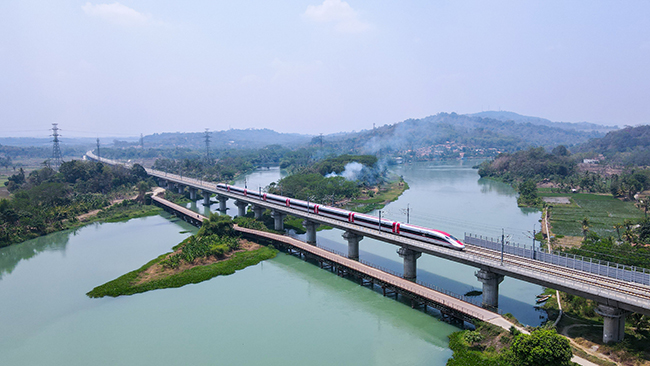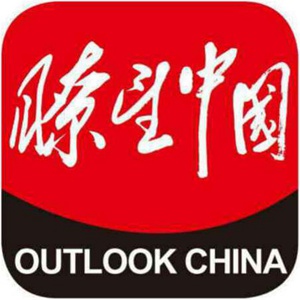
China’s rising phenomena with fast economic development is drawing the attention of the world. The Chinese economy has been increasing dramatically since China's reform and opening up during the last century in 1978. It grew at a rate of 9.3% per annum from 2008 to 2012, accounting for 29% of the global net economic growth. After 2012, it slowed down, however, still maintaining a growth of 7.0%. China’s economy continued its strong recovery from coronavirus in the first quarter of 2021 as the country unveiled a record annual growth rate. At this point, China's economy remains stable with steady growth while resisting protectionism, and it has shown the world that it has a trend of sustainable development, but also serves to position it as a world innovating powerhouse.
In his work, A Study of History, published 1934–1961, Arnold Joseph Toynbee examined the rise and fall of 26 civilizations in the course of human history, and concluded that they rose by responding successfully to challenges under the leadership of creative minorities composed of elite leaders. Toynbee predicted in his later years, the 19th century belongs to the U.K., the 20th century belongs to the U.S., and the 21st century belongs to China. However, Milton Friedman considered this in a different way. In 1980, he was invited to China for a lecture tour as the world’s leading advocate of free-market fundamentalism. He once confessed to a friend that he believed that his visit to China was “a phenomenon and almost literally incredible.” Later on, Friedman left China, angrily claiming that his hosts were “unbelievably ignorant about how a market or capitalist system works.” Nevertheless, Steven N.S. Cheung wrote in his well-known book China’s Economic System: “I can write a thick book criticising China in a week. However, with so many unfavourable predicaments, China's rapid growth has lasted for so long, and it has never been seen in history. China must have done something very right to produce the economic miracle we have seen. What is that? This is the real question for us to answer”.
Alan Macfarlane described in his recent book China, Japan, Europe and the Anglo-Sphere: A Comparative Analysis published by Cam River Publishing that China was often peaceful and in general less aggressive than western civilizations. The philosophy put a high premium on harmonious social relations. The Chinese people were, and are, hard-working, tolerant and rational, ingenious and humorous. In many respects, it was not just the longest and largest civilization in history, but the most estimable. He continued that China will be the most important economy and civilization on the planet – reaching out and influencing lives all over this world.
The international community uses "miracles" to describe China's fast development and achievements. However, it has for a long time been preoccupied with China’s innovation model and development model. It is known as the paradoxes of China’s rise. What is the impetus behind these? What has aided China’s rise and enabled it to become the second largest economy within 40 years?
The paradoxes of China’s rise by Friedman
Friedman no doubt was the most influential figure in promoting free trade around the world, however, he was understandably impatient in China. He believed that the country embodied everything that was wrong with government planning. Indeed in 1980, China was facing challenges and uncertainty in terms of economic and social development. Deng Xiaoping’s leadership and his government were trying to improvise new solutions to the country’s economic backwardness, which Chinese officials thought had exposed China to humiliation in the 19th and early 20th centuries. It was Deng’s strong belief that “Development is the only truth. If we don’t develop, we will be bullied.”
Ezra Vogel, the author of Deng Xiaoping and the Transformation of China expressed, “In 1978, Deng was not sure of the blueprint & strategy about how to build a stronger China, but he had a framework”. However, Richard Evans, another high-profile author of Deng Xiaoping and The Making of China described in his book that Deng had a chance to attend the UN Development and Cooperation Conference in New York when he regained power in 1974. In fact, he did not address the development and collaboration issues. Evans believed that there were two important points for Deng’s trip to New York, which gave tremendous influence on the world later on. Evans strongly believed, “he did not only make himself known to the world but was also deeply impressed by the astonishing scene of Manhattan in New York in 1974 while he stayed for three days the first time”. And as for national development, in Deng’s view, it could be achieved by a variety of means. Therefore, he launched the economic reform and opened to the outside world in 1978. His important contribution was to proclaim that poverty was not socialism. For building a strong economy, he did encourage the introduction of western technology, innovation, investment, and management, etc. His strategic insight of embracing contradiction on no debating of “being capitalism or socialism” and pragmatic flexibility were summed up by much-popularized Chinese maxim: “It is a good cat, no matter if it is white cat or black cat as long as it catches the mice” and “Cross the river by feeling for the stones.”
Friedman died in 2006 and the financial crisis occurred in 2008. In terms of the social and economic development, there are now perhaps half a dozen “Manhattans” appearing in China after 40 years when Deng announced the economic reform and open policy in 1978.
However, Friedman would have found it still harder to explain why China has emerged as central to the global economy. There is a populist backlash, anti-globalisation and free trade in the west, nevertheless, it is unbelievable that the west was once the home of globalization and free trade, which enabled the western world to sustain prosperity and flourish for hundreds of years. Could globalisation and free trade be blamed as the western world suffers a slow economic recovery and the complicated social problems? Are anti-globalisation and free trade the right solutions for the current problems?
The global impact of the pandemic and the unbalanced social and economic development between the west and east urges people to rethink and reconsider the new normal, which presents different opportunities and global challenges. The current tendency of anti-globalisation and free trade in the west has enabled globalization to reach a crossroads. The 21st century is an era of contending, large reflection and re-thinking, and an era which calls for big ideas, wisdom and big strategy.
What is it? Many countries in the world look forward to sharing the systematic study and theoretical refinement of China's development practicality, expecting China to actively participate in global governance and contribute to the global community. The global community has for a long time been keen to understand China’s innovation model and development while Friedman’s paradoxes remain unresolved.
In fact, Western economic theory is not in the position to interpret China’s reform practicality, which requires Chinese theory – the theory which reveals China’s innovation model and what has enabled China to do so. Hence, this is what the book is about.
What is it?
China Embracing Innovation is a strategic model and a new paradigm of the wise who are seeking common development, sharing resources and a win-win solution. It is a social innovation. It refers to a novel and innovative solution to a complicated social problem. The solution is more distinctive, effective and efficient, better, equitable and sustainable than the existing approach. At the same time, it creates value for the benefit of society as a whole. The essential elements, also regarded as the four pillars of the Embracing Innovation theory, are as follows: 1. embracing contradictions, 2. heading with the times, 3. seeking common ground while maintaining differences, and 4. creating harmony and tolerance. These four pillars support and complement each other.
The value system of “China Embracing Innovation” can be summarized into four "integrations":
- an integration of prescriptive strategies with emergent strategies.
- an integration of the planning economy with the marketing economy.
- an integration of eastern and western management theories and philosophies.
- an integration of different cultures and civilizations.
It is more reflected in the superstructure and ideological field. It contains two levels: a. it refers to concept and philosophical innovation, designed as a top guide to break the shackles of the spirit and helps problem-solving. It delivers social and political sustainability; b. it refers to innovation of technology and management, which balances the innovation strategy between indigenous innovation and imitative innovation and helps to build a solid economic foundation and sustainability. The two levels of “Embracing Innovation” are complementary to each other, which makes the “embracing innovation” a soul of national progress and world development, an inexhaustible power of the national prosperity and world peace.
【欢迎转载 请注明来源】

